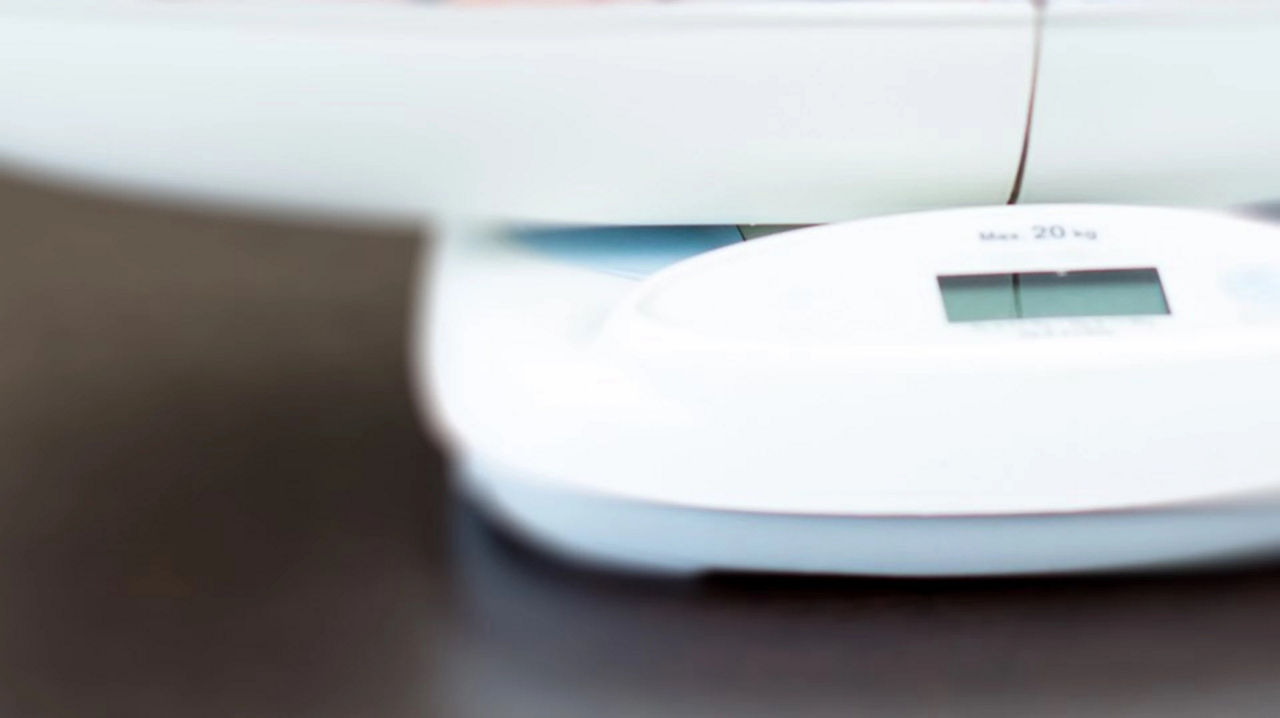Tongue-tie (also known as ankyloglossia) occurs when the strip of skin that connects a baby’s tongue to the floor of the mouth (called lingual frenulum), is shorter than normal1.
Tongue-tie in babies
What is tongue-tie in babies?

What does tongue-tie in babies look like?
Tongue-tie affects all babies differently. Some babies with tongue-tie don’t seem to find it problematic, whilst others might have restricted tongue movement, which can make breast or bottle feeding difficult for them. If this is the case, it’s possible that your baby will need a simple surgical procedure to correct it. You can read more about this here.
Tongue-tie can be hard to spot. In fact, it might only be diagnosed when your baby starts experiencing feeding issues. If your baby is having difficulty opening their mouth widely1, sticking their tongue out, or moving it from side to side, it’s possible that tongue-tie is the cause. Some babies have a heart-shaped appearance on the tip of their tongue1 which could also indicate tongue-tie.
How to spot the signs of tongue-tie in babies
If you’re breastfeeding your baby, possible signs to look out for include3,4:
- Difficulty latching onto your breast when feeding. In some cases, babies are unable to latch onto the breast at all
- Your baby is struggling to stay attached to the breast for the entirety of their feed
- Clicking noises as your baby loses suction whilst feeding. However, this can also mean that your baby isn’t positioned properly. Take a look at our advice on breastfeeding positions here to see if that helps
- Your baby is unsettled and continuously hungry
- Poor weight gain
It’s important to remember that breastfeeding comes with its own unique set of challenges, and feeding issues may occur for reasons other than tongue-tie. That’s why it’s important to find the right support and solutions. You should always reach out to your midwife or GP for advice if you’ve got concerns about the way your baby is feeding.
If you’re bottle feeding your baby, look out for your baby doing the following2:
- Drinking very slowly and taking a long time to finish a bottle
- Drooling a lot during feeds
- Constantly pushing the bottle teat out of their mouth
- Chokes on feeds and only being able to manage a teat with a slow flow
Tongue-tie treatment for babies
It’s important to say that tongue-tie treatment isn’t always necessary. And if tongue- tie is diagnosed, it really comes down to whether your baby can feed without issues, or not.
If your baby’s feeding is affected, a quick surgical procedure known as a ‘tongue-tie division’ will be necessary. This procedure is almost painless for your baby.1 In most cases, once it’s taken place, your baby’s feeding will improve soon after.
Tongue-tie division can be performed by a doctor, nurse or a midwife, but they must have had the proper training in tongue-tie division in order to do so.
Visit the Association of Tongue-tie Practitioners (ATP) to find a tongue-tie practitioner.
How is tongue-tie surgery performed in babies?
Tongue-tie division only takes a couple of minutes. It consists of the healthcare professional lifting your baby’s tongue and cutting the frenulum with sterile scissors. Your baby’s head will need to be held in order to keep them still1.
If your baby is very young, tongue-tie division will usually be performed using only a local anaesthetic, which numbs the tongue. It can also be performed without any anaesthetic at all1 as the procedure doesn’t appear to cause pain for babies, although some may cry a little2.
This is due to the fact that there are only very few nerve endings located in the bottom of the mouth. Some babies even sleep through the procedure.
For older babies who already have teeth, a general anaesthetic is usually needed for the procedure.
What to expect after tongue-tie division
After a tongue-tie division, the inside of your baby’s mouth is likely to heal very quickly. Keep an eye out for a white patch appearing under your baby’s tongue. This will heal within 1 or 2 days2.
Feeding a tongue-tied baby after treatment
After the tongue-tie procedure, your baby may need a bit of time – a week or two – to adjust to their tongue’s new found mobility. In most cases however, parents notice a very quick improvement in their baby’s feeding, whether that’s from the breast or the bottle.
Remember to be patient and let your baby ease back into feeding. They’ll adapt given a little bit of time. Think about ways in which you can make the feeding environment as relaxed and stress free as possible to allow you and your baby to enjoy feeding time.
Does tongue-tie affect speech?
In most cases, untreated tongue-tie won’t cause problems, since any tightness may naturally resolve as your child gets older. However, it’s possible for tongue-tie to sometimes affect speech and make it difficult to eat certain foods1. As such, it’s always best to speak to your GP if you think your child is experiencing difficulties because of tongue-tie.
Should I talk to a healthcare professional?
Whilst tongue-tie is easily resolved in most cases, it’s always a good idea to talk to your health visitor or GP if5:
- Your baby is having difficulty breastfeeding or bottle-feeding caused by tongue-tie
- Your child’s speech is being affected by tongue-tie
- Your baby isn’t gaining weight as expected, or is losing weight
If your baby is diagnosed with tongue-tie, your healthcare professional will be able to advise you on the practical ways you can continue to breastfeed or bottle-feed. If appropriate, they’ll also talk you through the medical solutions available.
Related articles

Need some help?
You can get quick answers to common questions in our FAQs.
Alternatively, if you need help with general pregnancy or baby advice, or maybe on using or ordering our products - our expert team are always on hand to talk about feeding your baby.




